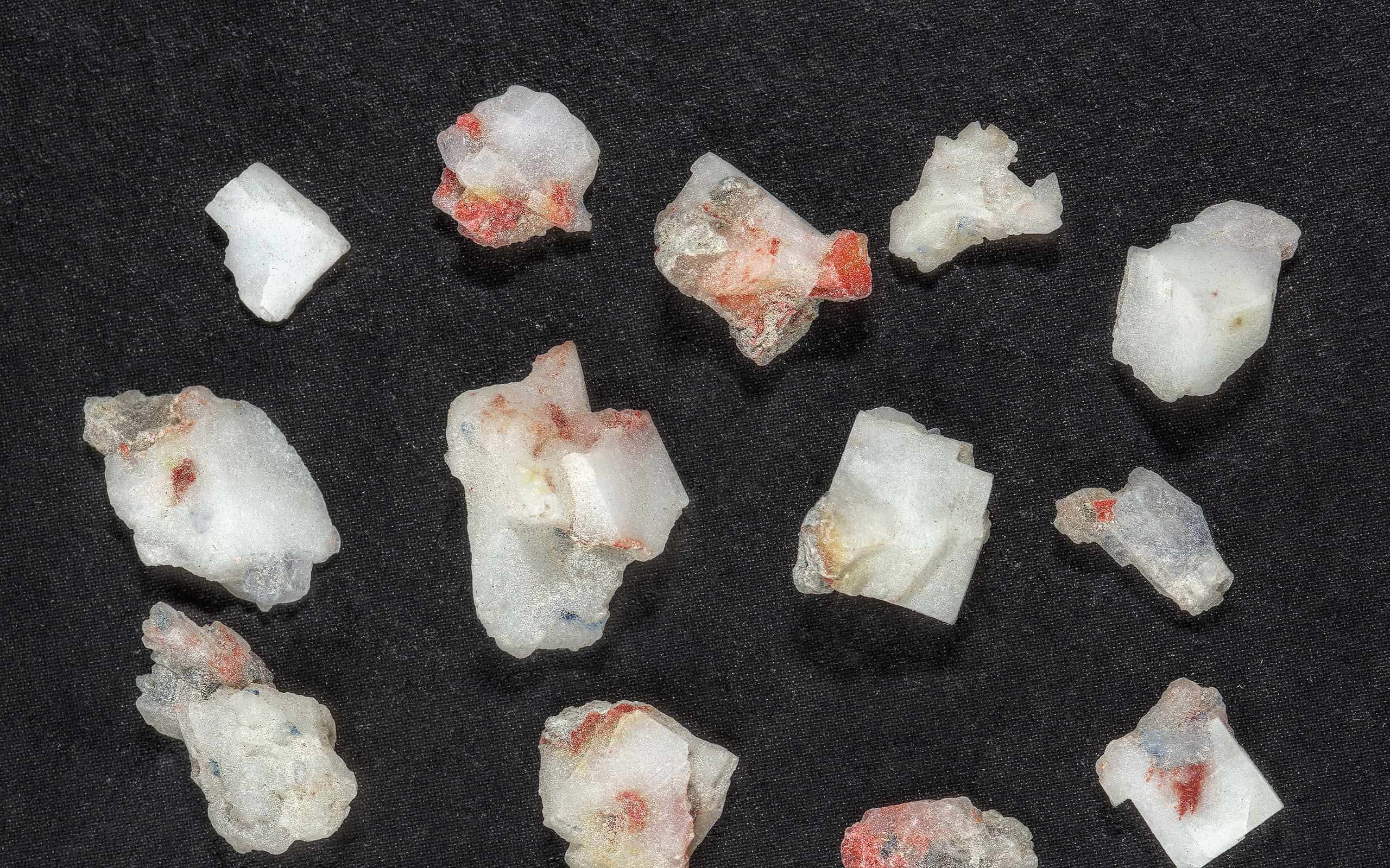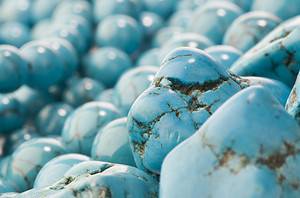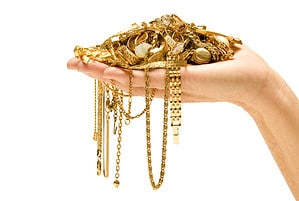Potassium chloride is a compound that can be both beneficial and deadly. This chemical compound, found around the world in deposits that mainly lie underground, works as an environmentally friendly fertilizer. It functions as a helpful food additive for both humans and livestock. And it can be used medicinally to save lives or to end them. In this article, we will discover the molar mass of potassium chloride, take a closer look at its atomic structure, and learn about how this chemical compound is mined and used.

Pure potassium chloride, KCl, is a white or colorless crystalline salt.
©Kittisak Kaewchalun/iStock via Getty Images
The Molar Mass of Potassium Chloride
Potassium chloride, as a chemical compound, is defined as a pure substance. Pure substances include each element on the periodic table and every defined chemical compound. These each have the same chemical composition throughout, with the smallest particle of an element being an atom, and the smallest particle of a compound being a molecule. Every pure substance has a specific molar mass which influences the physical and chemical properties of the substance. The molar mass of potassium chloride is 74.55 grams per mole, but what exactly does that mean?
The molar mass of a substance is simply the mass of one mole of that substance expressed in grams. In chemistry, a carefully defined number of particles, whether atoms or molecules, makes up a unit called a mole. That number, known as Avogadro’s number or Avogadro’s constant, equals approximately 6.022 × 1023 units. This constant, named for the Italian scientist, Amadeo Avogadro, is the same in every circumstance for every pure substance, and it is essential to understanding chemistry and how the world works.
Molar Mass vs. Atomic Mass
The atomic mass of an element or compound determines its molar mass. You can find the atomic mass of each element listed on the periodic table, usually just below the chemical symbol. The atomic mass is measured scientifically. The average of all the known isotopes of the element, weighted by their proportion as found in nature, equals the atomic mass for that element.
Each isotope of a specified element has a fixed number of protons, equal to the atomic number of the element. However, the number of neutrons in each isotope varies. Each proton has a value of one atomic mass unit, and so does each neutron. The mass of any number of electrons is negligible.
To better understand how the atomic mass of isotopes is measured, let’s look at carbon as an example. Carbon has three isotopes, carbon-12, carbon-13, and carbon-14. The carbon-12 isotope has six protons and six neutrons, which equals a total atomic mass of 12. Carbon-13 has six protons and seven neutrons, with an atomic mass of 13. Meanwhile, carbon-14, a radioactive carbon isotope used in dating organic materials, has six protons and eight neutrons. Because carbon-12 is by far the most common carbon isotope, the atomic mass of carbon is skewed in its favor, measuring at 12.011 atomic mass units.
Calculating the Molar Mass of Potassium Chloride
If you know the atomic mass of an element, you can easily convert to the molar mass. Simply express the atomic mass in grams. The mass of one mole of atoms of an element equals the atomic mass in grams. The same applies to compounds, which contain two or more atoms of the same or different elements in each molecule. However, you must add up the atomic masses of all the atoms in the molecule to get the compound’s atomic mass.
Potassium chloride, KCl, has two atoms in each molecule. It has one potassium atom and one chlorine atom. One mole of potassium chloride molecules would have one mole of calcium atoms and one mole of chlorine atoms. To find the mass of one mole of potassium, just convert the atomic mass of potassium to grams. One mole of potassium has a mass of 39.10 grams. One mole of chlorine has a mass of 35.45 grams. Adding the mass of these two atoms gives a total of 74.55 grams as the molar mass of potassium chloride.
Atomic Structure of Potassium Chloride
Potassium chloride, KCl, is a diatomic salt, much like sodium chloride, NaCl. Many different types of salts exist. These compounds have one or more cations, or positively charged ions, bonded ionically to one or more anions, or negatively charged ions. The net charge of a salt equals zero. Salts often combine positively charged ions from Group 1 of the periodic table, the alkali metals, or Group 2, the alkaline earth metals, with negatively charged non-metals, such as the Group 17 halides or polyatomic ions, such as the CO32- carbonate ion.
When atoms join together to form compounds, each one seeks to fill the orbitals in its outer shell with enough electrons to reach a stable configuration. This stable configuration is usually equal to that of the nearest noble gas, or Group 18 element. Ionic bonding, the type used in the formation of salts like potassium chloride, involves the giving and taking of electrons. This is different than the sharing of electrons as seen in covalent bonding, as seen in molecules like carbon dioxide. Many compounds use covalent bonding and share electrons to reach the desired noble gas configuration, but potassium chloride and other salts use ionic bonding to reach that stable configuration.
Potassium, a Group 1 alkali metal, has just one electron in its outer shell. The easiest way for a potassium ion, K+, to reach the stable configuration of the nearest noble gas, argon, is to give away that lone electron. Chlorine, a halogen from Group 17, has seven electrons in its outer shell. The chloride ion, Cl–, is just one electron away from the nearest noble gas configuration. It can reach that configuration most easily by accepting a single electron.
Potassium Chloride Bonds
When a potassium ion gives the electron from its outer shell to a chloride ion, an ionic bond forms and the result is potassium chloride. Each calcium ion, with its plus one charge, can bond with one chloride ion, each with a minus one charge, to form a molecule with a neutral charge. The following chemical equation shows this reaction.
K+ + Cl– → KCl
When this happens, the calcium ion gives up its extra electron, and the chloride ion accepts it, giving both ions a perfect eight electrons in their outer shells. The resulting molecule is diatomic, meaning it is composed of just two atoms. All diatomic molecules, by default, have a linear structure. Potassium chloride molecules come together to form crystals, as seen in nature.
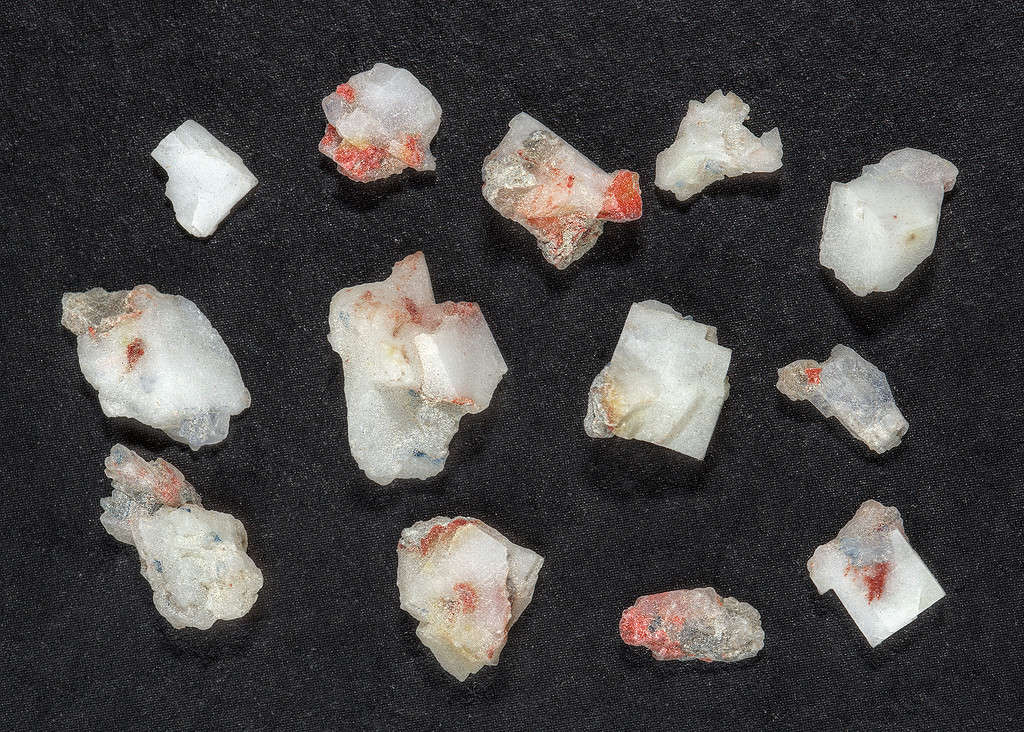
Sylvite is potassium chloride (KCl) in natural mineral form. It forms crystals in the isometric system.
©A_Pobedimskiy/iStock via Getty Images
Potassium Chloride in Nature
Although potassium, the seventh most abundant metal, makes up roughly 2.4 percent of the Earth’s crust, it exists only in the form of compounds such as potassium chloride, potassium hydroxide, and others. Potassium chloride found in nature exists as a crystalline solid, a form of potash known as sylvite, or sometimes sylvine. Although the compound itself is clear and colorless, the crystals often appear reddish brown due to impurities.
Potassium chloride in the form of sylvite exists in very dry, saline areas, typically in ancient marine beds where water evaporated slowly over time, or near volcanoes, where it could precipitate from the produced gases at high temperatures. Sylvite was first found in fumaroles near Mt. Vesuvius in Italy, and later in various locations around Europe and other continents, excluding Antarctica to date. The largest beds of sylvite in North America lie in Saskatchewan, Canada. Others rest in the Permian Basin in western Texas and part of New Mexico, and in Utah and California.
Companies obtain potassium chloride in three ways. They may use conventional mining to dig solid potassium chloride from an underground source. Or they can use solution mining, pumping a hot liquid solution into the underground source to dissolve the potassium chloride and pump it out. Finally, they might simply evaporate brine and collect the potassium chloride from the top of the solution, as it is typically the last salt to deposit.
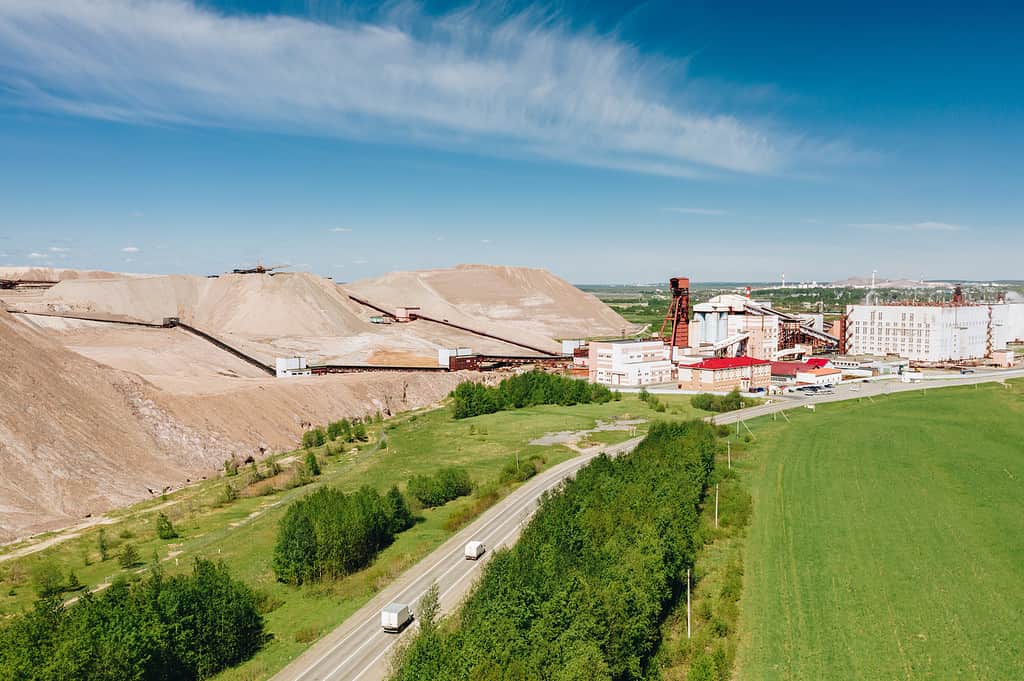
Potassium chloride is mined and processed in huge operations.
©Vitaliy Kaplin/iStock via Getty Images
Common Uses of Potassium Chloride
Potassium chloride has many common uses. Listed below, some of the most common uses account for most of the production of potassium chloride.
Agricultural Uses
The vast majority of potassium chloride produced in the world, up to 90 percent or more, is used for plant fertilizer. This highly effective fertilizer, sold commercially as muriate of potash, has little adverse effect to the environment.
Farmers also use potassium chloride as an additive to animal feed, to boost their potassium levels. This additive effectively helps to increase milk production in both cows and goats.
Oil and Gas Operations
Potassium chloride, when added to the water used in oil and gas drilling operations, can help to counteract the swelling of unstable shales and smectite clays and increase stability. This effect happens because the potassium chloride readily dissolves in water and gives up its positive K+ ions. The positive ions are taken up by the surrounding substrate and incorporated into their matrix, thus providing a more stable structure.
Manufacturing Goods
Potassium chloride has several important uses in the manufacturing of a variety of products. It can help produce exceptionally clear glass for everything from monitors and eyeglasses to fancy glassware. The compound also works as a water softener and an environmentally safe alternative to other de-icing chemicals.
Dietary Supplements
Potassium chloride can be used as a dietary supplement in place of sodium chloride. Both compounds are salts, but potassium chloride does not raise the level of sodium in a person’s blood. Many people, due to medical conditions, have to eat a diet low in sodium, so products that substitute potassium chloride for sodium chloride can help. The substitution can take some getting used to, though, as potassium chloride has a bitter taste that some people do not enjoy.
Medical Uses
Perhaps the most important uses of potassium chloride include medical purposes. We need potassium in order for our bodies to function properly. Most people get enough potassium from the foods they eat, particularly fresh and dried fruits, vegetables, legumes, nuts, and seeds. However, some people need extra potassium for nerve function and muscle health. This added potassium most often comes in the form of medicinal potassium chloride.
Dangers of Potassium Chloride
According to research studies, the use of potassium chloride may be dangerous in some people. This applies to both dietary supplements and medically prescribed doses. People with kidney disease or other conditions may have an increased risk of hyperkalemia when consuming potassium chloride. Hyperkalemia is an excess amount of potassium in the blood. Only your doctor can evaluate whether potassium chloride is an appropriate supplement or medication for you.
Too much potassium chloride can be deadly. Whether ingested in an oral form or administered intravenously, excess potassium chloride may result in serious damage or death. In fact, several states use potassium chloride as one of the cocktail of drugs in the lethal injections of death row inmates. The compound, when administered in the lethal dosage, causes cardiac arrest.
Other Potassium Compounds
Let’s take a look at several other potassium compounds. The compounds below all include a positively charged potassium cation and a negatively charged anion. The larger the mass of the negatively charged ion, the larger the molar mass of the compound will be.
| Compound Name | Chemical Formula | Molar Mass | Primary Uses |
|---|---|---|---|
| Potassium chloride | KCl | 74.55 g/mol | Fertilizer and medical use |
| Potassium fluoride | KF | 58.10 g/mol | A main source of fluoride ions in labs |
| Potassium bromide | KBr | 119.00 g/mol | Antiepileptic drug for dogs |
| Potassium iodide | KI | 166.00 g/mol | Protect the thyroid gland |
| Potassium nitrate | KNO3 | 101.10 g/mol | Food preservative and explosives |
| Potassium carbonate | K2CO3 | 138.21 g/mol | Production of soap and glass |
Conclusion
As you have learned, potassium chloride is an important chemical compound that occurs naturally in our world. This salt has a very simple structure, consisting of just two atoms, but it has many uses. It provides much-needed potassium to plants, animals, and humans when needed. Just be careful when using potassium chloride, as it has a dark side, too.
Thank you for reading! Have some feedback for us? Contact the AZ Animals editorial team.

